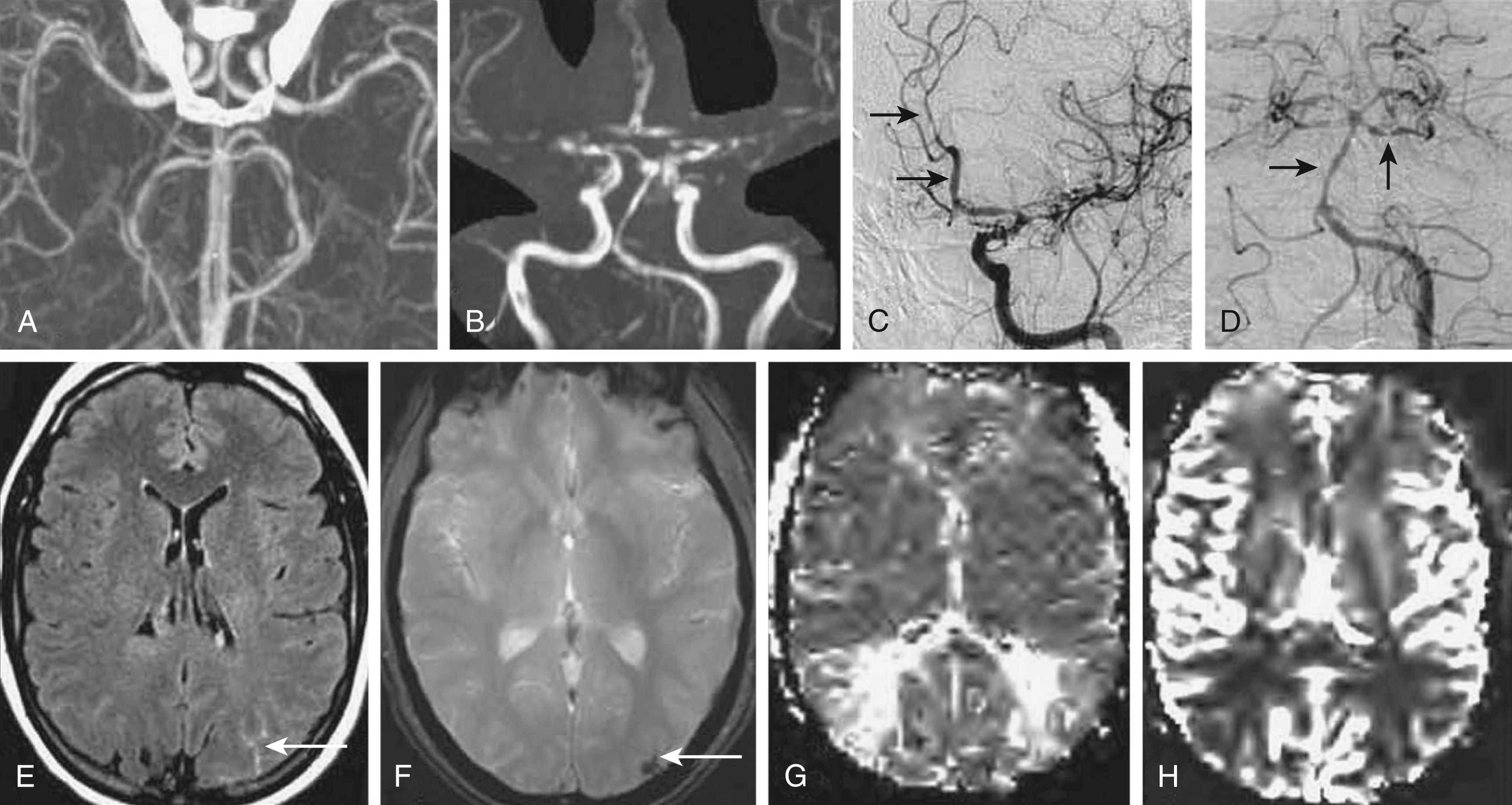Physical Address
304 North Cardinal St.
Dorchester Center, MA 02124
Reversible cerebral vasoconstriction syndromes (RCVS) are a group of conditions characterized by reversible multifocal narrowing and dilatation of the cerebral arteries.
The mean age is 42 years; age range 4 months to 76 years. The female:male ratio ranges from 2:1 to 10:1.
The etiology is unknown. Associated triggers include vasoconstrictive medications, illicit drugs, sexual orgasm, and recent pregnancy, among others.
Most patients present with sudden, severe (“thunderclap”) headaches that recur over a span of 1–4 weeks.
Recent studies suggest that RCVS and “primary thunderclap headache” belong to the same spectrum of disorders.
Inpatient series show that approximately one-third to one-half develop visual deficits, weakness, or seizures.
Despite the often severe and widespread arterial narrowing, the admission brain scan is normal in over 50% of patients. New brain lesions can develop, usually within 8–12 days after onset. Ultimately, approximately one-third of the brain scans remain normal; the rest show ischemic strokes, convexal (non-aneurysmal) subarachnoid hemorrhages, lobar hemorrhages, and reversible brain edema, alone or in combination.
Cerebral angiographic abnormalities are dynamic, usually progressing from distal to proximal segments, resulting in a “sausage on a string” appearance of the circle of Willis arteries and their branches. These angiographic abnormalities usually resolve spontaneously within 3 months.
While some patients can develop new, usually mild neurologic deficits in the first few days, the clinical outcome is benign in 95% of patients. Severe irreversible deficits or death from progressive cerebral vasoconstriction is rare.
There is no proven treatment. Oral calcium-channel blockers are often administered.
Glucocorticoid treatment has been associated with poor outcome. Intra-arterial vasodilator therapy has been attempted in fulminant cases, with variable success.
Recurrence of an episode of RCVS is rare.
Chronic headache and depression are common long-term symptoms.
The RCVS2 score can be applied upon admission to accurately diagnose RCVS and rule out mimics such as cerebral vasculitis.
Reversible cerebral vasoconstriction syndromes (RCVS) are a group of conditions characterized by reversible multifocal narrowing of the cerebral arteries, typically associated with recurrent sudden, severe (thunderclap) headaches and often complicated by ischemic or hemorrhagic strokes and brain edema. , A typical case is illustrated in Fig. 37.1 . Over the past 60 years, this enigmatic reversible angiographic phenomenon has been reported under a variety of names and eponyms, each reflecting the associated clinical setting ( Box 37.1 ) or the presumed pathophysiology—for example, migrainous “vasospasm” or “angiitis” , ; thunderclap headache with reversible vasospasm ; postpartum cerebral angiopathy, angiitis, or vasospasm ; drug-induced cerebral arteritis or angiopathy , ; Call or Call-Fleming syndrome , ; central nervous system (CNS) pseudovasculitis ; and benign angiopathy of the CNS. Over the past 15–20 years it has been recognized that patients with reversible cerebral arterial narrowing have similar clinical, laboratory, imaging, and prognostic features regardless of the associated underlying condition(s). The descriptive term RCVS has been proposed to facilitate the recognition and management of this group of disorders.

No identifiable associated or precipitating factor
Headache disorders (primary thunderclap headache, primary exertional headache, primary headache associated with sexual activity, primary cough headache, migraine)
Antimigraine medications (triptans, ergot derivatives, isometheptene)
Cough and cold suppressants (phenylpropanolamine, pseudoephedrine)
Antidepressants (selective serotonin reuptake inhibitors [SSRIs] and serotonin-noradrenaline reuptake inhibitors [SNRIs])
Adrenergic medications (epinephrine, methergine, bromocriptine, lisuride)
Illicit drugs (marijuana, cocaine, ecstasy, lysergic acid diethylamide)
Blood products (red blood cell transfusion, erythropoietin, intravenous immune globulin)
Hormonal agents (oral contraceptives, ovarian stimulation)
Chemotherapeutic agents (tacrolimus [FK-506], cyclophosphamide)
Other (licorice, khat leaves, ma huang, Chinese herbal remedies, eucalyptus, methylergonovine, nicotine patches, indomethacin, interferon-α)
Early puerperium, late pregnancy, eclampsia, preeclampsia, delayed postpartum eclampsia
Become a Clinical Tree membership for Full access and enjoy Unlimited articles
If you are a member. Log in here